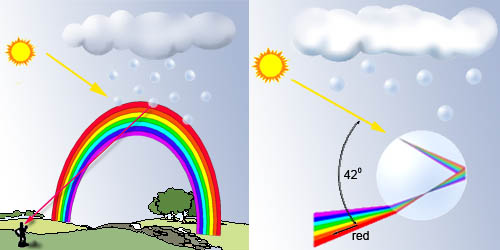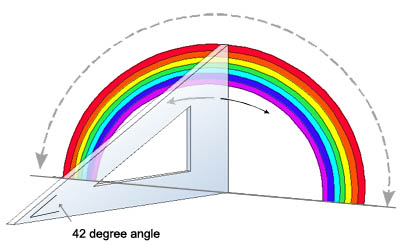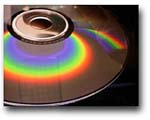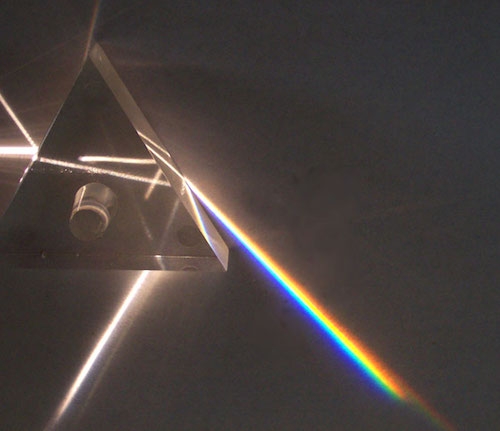show/hide words to know
How Are Rainbows Made?
The rainbow is the most common and yet wonderful example of a color spectrum. What does it take to make a rainbow? The conditions must be right. The sun must be in one part of sky and rain falling in another. You must stand with your back towards the sun. If you look towards the rain shower you will likely see a circular arch of color.

A Dash of Sunlight and Drops of Water
Now that you know the conditions for making a rainbow, what are some of the ingredients? Two things are needed, raindrops and the sun. The raindrops act like tiny prisms. As the sun's rays enter a raindrop, some of the light is reflected back. The rest of the light is refracted into the water. The refracted light is spread into the spectrum of colors. As the different wavelengths of light reach the back of the raindrop some are refracted out of the raindrop. The rest of the light is reflected back into the water. Finally the light is refracted into the air. There are millions of these tiny prisms during a rain storm. Together they make a rainbow.
Why Is a Rainbow Shaped Like a Half Circle?

A little math to learn the angles
The answer has to do with angles. Forty-two degrees is the angle that we see red refracted from a raindrop. The only way to have exactly forty-two degrees from the point you are standing is to draw a half circle. The red color band is at a 42 degree angle to the viewers eye in relation to the sun and raindrop. The drawing above shows a forty-two degree angle and how it forms the red arch of a rainbow. If it were not for the ground you could have a rainbow with complete circle.
What about the other colors?
You might wonder how we see the other colors. Each of the colors are seen at different angles. Colors like blue are seen by the eye when the drops of rain and sun make an angle of 40 degrees.
Make Your Own Rainbows
If you do not want to wait for Mother Nature, you can make your own rainbow. All you need is a sunny day and a garden hose with a spray nozzle. You also might want to get a friend to help. Adjust the spray nozzle so the water is a fine mist. Have your friend spray the water high into the air. Now stand with the sun behind you and look at the mist from the hose. If you are standing at the correct angle you will see a tiny rainbow.

Too cold to go outside and play with the hose? Take a look at a music compact disk or computer program compact disk. If you hold it at the correct angle you will see a full spectrum of colors similar to a rainbow. Don't be fooled. The colors you see are not made the same way as a rainbow. See if you can find out why it is different.
Image of prism splitting light by Fir0002.
View Citation

Light spectrum when a beam of light is passed through a prism.
Be Part of
Ask A Biologist
By volunteering, or simply sending us feedback on the site. Scientists, teachers, writers, illustrators, and translators are all important to the program. If you are interested in helping with the website we have a Volunteers page to get the process started.









